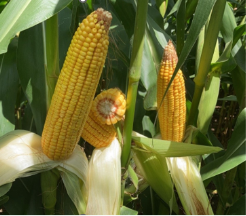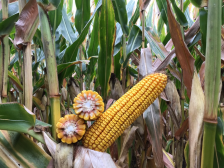Westfield, Indiana, USA
December 6, 2023

Rains that fell on Family A hybrids like A646-30 during grain fill in the Ohio River Valley flexed big in response.
Each year, one (or several) of AgriGold’s Field GX™ families knock it out of the park. Two of this year’s big sluggers were Field GX families A and J, reinforcing the importance of tailoring hybrid placement to reach a farmer’s goals and match their management style.
AgriGold’s Field GX families consist of hybrids grouped together based on their genetic backgrounds and agronomic characteristics. AgriGold Agronomist Jacob Gehrls encourages farmers to plant hybrids from at least two families to minimize year-to-year risk. “We don’t know what the weather will bring. Each family differs in how it responds to the weather and a farmer’s management.”
Growing conditions in 2023 brought out the best in Family A in the Ohio River Valley and Family J in central Minnesota.
A strong start is key for Family A
“When Family A hits a home run, they knock it out of the park,” says AgriGold Agronomist Steven Heightchew of the Ohio River Valley. “Even if conditions aren’t ideal, you’ll still get a solid crop from this group of hybrids if it’s planted in high fertility fields.”
In addition to high-fertility soil, Family A hybrids thrive when they get off to a strong start, as was the case this spring.
Farmers can help their cause by feeding Family A hybrids nutrients upfront. “Front-load nitrogen and give Family A hybrids plenty of potash early,” Heightchew advises.

Family J’s A630-04 was a top performer in many trials in 2023, featuring great late-season plant health, stalk strength and impressive yields.
Family A showed off its flex this season
Field GX Family A “shows off when we have good grain fill conditions,” according to Heightchew, adding that ear flex is its most prominent feature. “We had a dry June but caught rains during the grain fill period to fill deep kernels.”
Additionally, Heightchew says a fungicide application can extend and improve the grain fill period.
Excellent grain quality and drydown for Family A
“Strong test weights and grain quality are a consistent quality of Family A hybrids,” Heightchew says, adding they also dry down well. “This season, an extended grain fill period resulted in less-than-ideal drydown conditions in the field. Family A was still able to get that moisture out, allowing for timely harvest.”
One hybrid that “really hit the mark” this year was A646-30, a 116-day relative maturity that’s expected to extend the planting zone for Family A.
One of Family A’s lesser-known advantages is a genetic background that’s rarely encountered in the corn industry. That enhances farmers’ ability to spread genetic risk.
Impressive yields from the newest Field GX family
Field GX Family J hybrids made their debut in 2023 and didn’t disappoint farmers in northern production areas like Minnesota, the Dakotas, and northern Iowa.
“Farmers were pleased with Family J’s yields and how it was built for the North,” Gehrls reports. “They’ve been especially impressed with A630-04, which topped many yield trials and has impressive late-season plant health. The consistency of how it’s performing across a wide range of environments has been exciting.”
Family J: Hybrids built for the North
Qualities that make Family J hybrids a great fit for northern production areas include late-season intactness, strong stands and good test weight. “This family is a match for many of the soil environments we encounter in western Minnesota,” Gehrls says.
Strong emergence is another key feature. “You can plant Family J hybrids fairly early, and they still emerge well,” he says. “It’s one of our better products on emergence with our cold soils.”
Family J is flexible in terms of nitrogen use and responds well to fungicides. Gehrls says, “I like to refer to this family as user friendly because it performs well in many management styles.”
Gehrls wants farmers to understand Family J has a different look compared to a lot of products. “Family J hybrids stay green later in the season and should be harvested soon after they’re ready,” he says. “They may be a bit greener than farmers are used to at harvest — a reflection of the good plant health that helped fill out kernels.”
Each year is different; make sure you’re prepared
Next season will bring an entirely different environment that likely allows another family to rise to the top. That reality is why it’s important to spread genetic risk. Reach out to your local AgriGold agronomist to learn more about diversifying your seed portfolio.